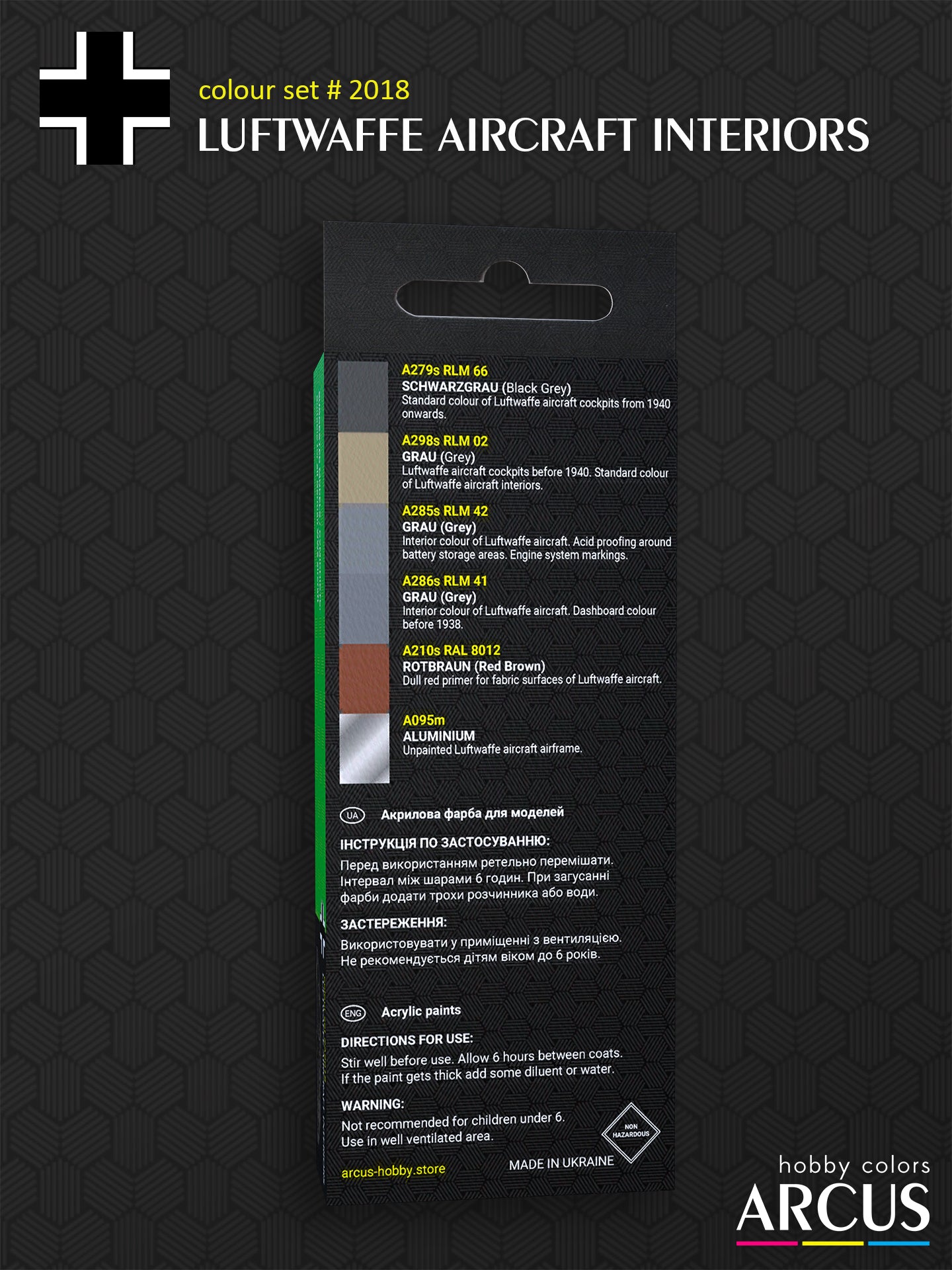Arcus Hobby
Paint Set 2018 Luftwaffe Aircraft Interiors
Impossible de charger la disponibilité du service de retrait
Luftwaffe Aircraft Interiors
During World War II, the Luftwaffe, the German Air Force, showcased innovative technologies in the design of their aircraft cockpits. One notable aspect was the incorporation of large glazing areas on reconnaissance aircraft and bombers, providing clear visibility for the crew and enhancing their situational awareness.
The Focke-Wulf Fw 189, a unique twin-engine tactical reconnaissance aircraft, stood out with its distinctive greenhouse-style canopy. The aircraft featured an extensively glazed cockpit, allowing the crew an exceptional field of vision. This design facilitated effective observation and reconnaissance missions, as crew members could scan the surrounding airspace and ground with minimal blind spots.
German bombers, such as the Junkers Ju 88 and Heinkel He 111, also adopted the concept of expansive glassed cockpits. These aircraft were equipped with transparent canopies that covered a significant portion of the crew compartment. The use of large glassed areas on these bombers enabled the pilots and other crew members to have unobstructed views of the sky and ground, contributing to improved navigation, target acquisition, and defensive capabilities.
The utilization of such extensive glazing areas was a testament to the German emphasis on maximizing visibility for aircrews during their missions. While this innovation provided clear advantages in terms of situational awareness, it also exposed the crew to increased vulnerability from enemy fire. Nevertheless, the balance between visibility and protection was a crucial consideration in the design philosophy of Luftwaffe aircraft during World War II.
Luftwaffe Aircraft Interiors Set Use Guide:
- This kit will be essential for building any model of the WW2 Luftwaffe aircraft.
- The Germans were very pedantic about painting airplanes and cockpits in particular. Exceptions to the standards were extremely rare and were due more to objective reasons and paint shortages than to free interpretation of regulations.
- The cockpits of German aircraft in the late 1930s and early 1940s were painted with yellowish-gray RLM 02 RLM-Grau paint.
- Beginning in 1940, the areas visible through the glazing received a new dark gray finish in RLM 66. The invisible parts of the interior continued to be painted in RLM 02.
Luftwaffe Aircraft Interiors Set Includes:
- 279 RLM 66 Schwarzgrau (Black Gray) - A dark gray cockpit color beginning in 1940.
- 298 RLM 02 RLM-Grau (RLM-Gray) - A yellowish-gray cockpit color in the 1930s, standard interior color in the 1930s to 1940s.
- 285 RLM 42 Grau (Gray) - An interior gray color used for acid battery protection and engine system markings in the mid-1930s.
- 286 RLM 41 Grau (Gray) - A gray color of dashboards in the mid-1930s.
- 210 RAL 8012 Rotbraun (Red Brown) - A dull red primer of the fabric covering.
- 095 Aluminium - Unpainted airframes and aircraft equipment.
Collection:
This Set is Best for:
- All WW2 German aircraft
Paint Type:
- Acrylic A2018
- Enamel E2018
Paint Finish:
- Semi-gloss
Capacity:
- 6 x 10 ml. (6 x 0.33oz)





